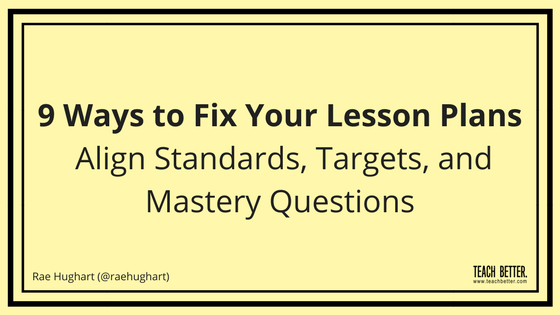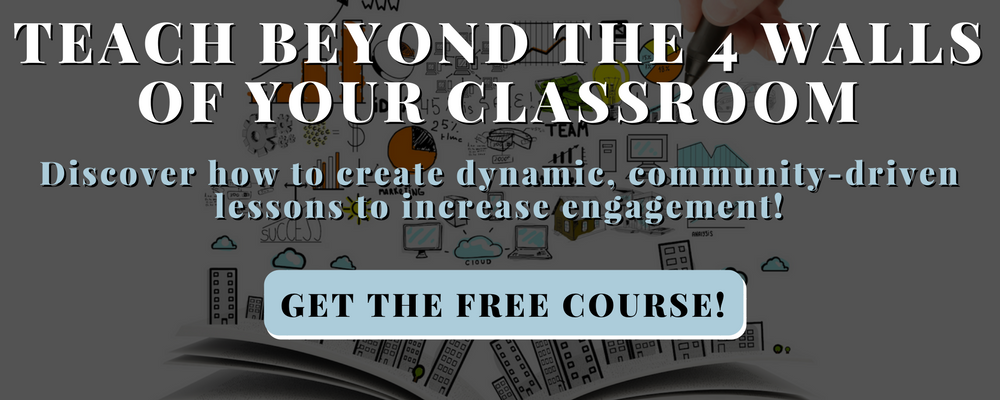Let’s fix our lesson plans! Fix #1: Align your standards, targets, and mastery questions.
Are you reading your standards? If not, it’s time to! We all know there are 100’s of skills we want our students to learn before leaving the safety of our classroom’s four walls – however, it is our responsibility, as educators, to connect our instruction to standards.
So, where do we start?
Read your standards!
Regardless of what subject or grade level you teach, locating where your learning standards are located is essential to start off an effective day in your classroom. Depending on your content area, standards may be found in a variety of locations and that can often vary by state. If you are not sure where to find your standards, reach out to your district! Your admin team should be able to provide you with the standards they have chosen to be attributed with your assigned class section, as well as a possible pacing guide – providing you with a specific order the standards should be taught over the course of the school year.
Your goal? Create targets your students can clearly understand and aim for! Click To TweetCreate targets using student friendly language!
Chad always says, “Standards are written for teachers. Targets are written for students.” Break down the academic language found within your standards and create student friendly learning targets. These are sometimes referred to as “I Can” statements. Remember, a single standard may be broken into multiple targets. That is ok!
Your goal? Create targets your students can clearly understand and aim for!
The most effective way to create strong, scaffolded targets is to utilize Webb’s Depth Of Knowledge. Webb’s Depth Of Knowledge (DOK) allows teachers to build content knowledge in a way that lets learners truly understand the content and master the material presented. This assures that your students are mastering foundational knowledge before moving on to higher levels of understanding. These targets will further guide your creation of both assessments and learning opportunities.
If you’re not familiar with Webb’s DOK, here’s a quick breakdown of the levels:
| DOK Level 1
Recall |
DOK Level 2
Skills/Concepts |
DOK Level 3
Strategic Thinking |
DOK Level 4
Extended Thinking |
| Arrange, Calculate, Cite Define, Describe Draw, Explain, Give examples, Identify Illustrate, Label Locate, List, Match | Apply, Calculate, Categorize, Classify, Compare, Compute, Construct, Convert, Describe, Determine, Distinguish, Estimate, Formulate | Appraise, Assess, Compare, Compile, Conclude, Contrast, Critique, Decide, Defend, Describe, Develop, Differentiate, Distinguish | Appraise, Connect, Create, Critique Design, Judge, Justify, Prove, Report, Synthesize |
| Example : Recall elements and details, conduct basic calculations, or order rational numbers | Example : Sort objects, show relationships, apply a concept, organize, represent and interpret data, or use context clues to identify the meaning of unfamiliar words | Example : Solve non-routine problems, Interpret information from a complex graph, or explain phenomena in terms of concepts | Example : Design and conduct an experiment that requires specifying a problem; report results/solutions or critique experimental designs |
Note: Adapted from “Web Alignment Tool” by Wisconsin Center For Education – The University of Wisconsin-Madison, 2005.
Bonus! As you plan your daily learning, link each day or learning opportunity to a target. This may be displayed at the front of your board or at the top of the learning activity. Regardless of where you post the target, make it consistent and easy for your students to understand. What are they working toward? How do they know they are ready to move forward? Its’ all in the target!
[scroll down to keep reading!]Design your Mastery Questions!
Once your learning targets are created, you should then develop Mastery Questions. Developing these questions can help guide your instruction and planning of Learning Opportunities. These questions should also be utilized as a foundation for both formative and summative assessments and projects. This will ensure that your targets, assessments, and Learning Opportunities are all aligned to maximize learner mastery and efficiency of instruction.
Each student in your classroom should be able to look through the targets associated with a specific standard at the end of the unit and say, “Yup, I can do that! Yes, I know this one! Ok, I got this section.”
If your students can meet each target, they are ready to prove their understanding on a Summative Assessment.
Below is an example of Mastery Questions that are aligned to a learning target. This particular example is shown at Level 1 of Webb’s Depth Of Knowledge.
| Learning Target | Mastery Questions |
| Level 1 Target :
I CAN define and explain positive and negative numbers and its relationship to 0. *Define all content specific vocabulary |
|
|
|
|
|
|
|
|
While Fix #1 focused on how to create well-developed content, directly linked to a content standard, this is not where it ends!
Keep enhancing your lesson plans with the other 8 fixes within our “9 Ways to Fix Your Lesson Plans” series!
Fix 1 : Align Standards, Targets, and Mastery Questions (Check!)
Fix 2: Personalize Learning
Fix 3: Scaffold Student Learning Opportunities (coming soon!)
Fix 4: Ask Your Students (coming soon!)
Fix 5: Connect Your Content (coming soon!)
Fix 6: Acquire Classroom Funding (coming soon!)
Fix 7: Create Differentiated Tools (coming soon!)
Fix 8: Assess Understanding, not Task Completion (coming soon!)
Fix 9: Ask your PLN (coming soon!)




